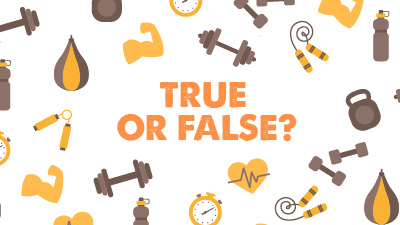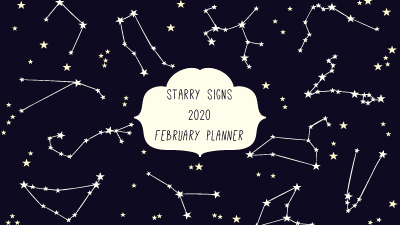Learn about the benefits of including exercise to your lifestyle with an interactive infographic and find out whether some of these statements are true or false.

Everyone says exercise is good for you, but do you know why? Here’s a list to make you see why it is so and why you need to add it to your daily routine. Nothing intense, but just something simple to keep you moving. Did you know speed walking is a thing?
While we know that exercise is good for us, do not be fooled by some myths connected with it. Can you identify which of these statements are true or false?
As you plan the month ahead, discover interesting facts about different constellations. What do you know about the constellation Pisces?

Have you ever wondered what is the purpose of a dog, in addition to being our best friends? Play this memory game to find out the story of origin of some dog breeds.

There are several breeds of dogs. They have been selectively bred for thousands of years. There are companion dogs, guard dogs, hunting dogs, herding dogs and working dogs.
Regardless of the breed, dogs are good friends and loyal to to the very last. Let’s learn more about some of the dog breeds and their purposes.
Move left you divide, move right you multiply. Sounds a little tricky but its easy peasy. Get your dose of math as you drag and drop the right numbers.

The metric system uses the meter, litre and gram as the base units of length (distance), capacity (volume), and weight (mass) respectively. To measure smaller or larger quantities, we use units derived from the metric units.
Length: Millimetre (mm), Decimetre (dm), Centimetre (cm), Metre (m), and Kilometre (km) are used to measure how long, wide or tall an object is.
Examples include measuring the thickness or length of a debit card, length of cloth, or distance between two cities.
Weight: Gram (g) and Kilogram (kg) are used to measure how heavy an object is.
Examples include measuring the weight of fruits or our own body weight.
Capacity: Millilitre (ml) and Litre (l) are used to measure how much quantity of liquid an object can hold.
Examples include measuring the amount of juice in a can or the amount of water in a tank.
Here’s how we can multiply or divide for metric conversions. To convert a bigger unit to a smaller unit we move left to right and multiply by ten for every step you move right. However, to convert a bigger unit to a smaller unit we need to move right to left and divide by ten every time we move left.

Now that you know the basics, try your hand at solving this worksheet.
Know someone who has very mad banners? Confused? Read the article to decipher what that statement really means.

How could a bean be dizzy? This sentence would make sense if you view it as a spoonerism.
A spoonerism is an error in a speech in which corresponding consonants, vowels, or morphemes (the smallest meaningful unit in a word) are interchanged between two words in a phrase. By that definition, the title of the article actually means to ask, “Is the dean busy?”
Get it?
Browse through the slides to learn more about spoonerism and test your language skills trying to decipher a few…
Some towns and cities in India have interesting names. How were they christened and what do the names mean? Let’s find out.

Have you wondered how some places have the strangest names? Like, for example there is Poo in Himachal Pradesh, Bhabua in Bihar and Daru in Jharkhand.
Here are a few more, and you get to figure out the meanings or derivations of the name by choosing an answer.
Look back and take a quick glimpse at this years Republic Day Parade.

The Republic Day Parade is one of the most significant events of the year. It takes place at the Rajpath in New Delhi. It begins with the hoisting of the National Flag by the Prime Minister of India, followed by the parade.
This year, India marked its 71st Republic Day, and members of the Army, Navy, Air Force, artists and students from all over the country participated. Stunts were performed, cultural programmes were organised, states were represented by tableaus created to a theme and so on.
Here are some of the highlights from the parade.
Do you pay attention to details? Take up this challenge and spot what is different.

To be hawk eyed is to be observant and have an eye for detail. Are you a vigilant person? If so, then be prepared to be challenged.

There are eight differences between the image above and the one below. Spot and click on the differences in the image below.
New year brought a mix of events with it – some big, some small. Let’s take a look at the major events that took place across India recently.

From Australian wildfires to outbreak of a deadly virus, while the world has been battling with disastrous events, a lot has been happening in our country too. While some have been heart-breaking, our country has experienced some good news as well. From rewarding our furry four-legged soldiers to inventing new types of vegetables, we bring you news in a nutshell.
Every instrument belongs to a family. It can be a percussion, wind, string, keyboard or brass. Read on to learn more about them by playing this drag and drop game.

In an orchestra, have you noticed how, people who play similar instruments sit together? Why?
Because, the seating is organised depending on the instrument families. For example, musicians playing wind instruments will sit together as also those playing percussion instruments.
Musical instruments are grouped into families based on the sounds they make. There are five main groups – strings, brass, woodwind, keyboards and percussion. Today however we will look at just three of them: string, wind and keyboard.
String instruments
In this family, music is created by strings that may be plucked, bowed or struck. This creates a vibration that causes a unique sound.
Keyboard instruments
A keyboard instrument comprises keys (in form of a row of levers) which are pressed by the fingers.
Wind instruments
Here air may be blown into the instrument, across an edge, between a reed and a surface, or between two reeds. The sound happens when the air vibrates inside.
Now that you have learnt a bit about these three families, drag and drop the instruments under their respective categories.











